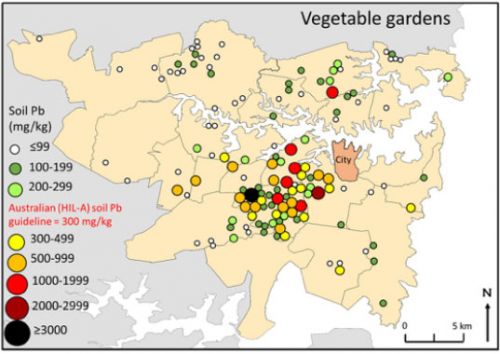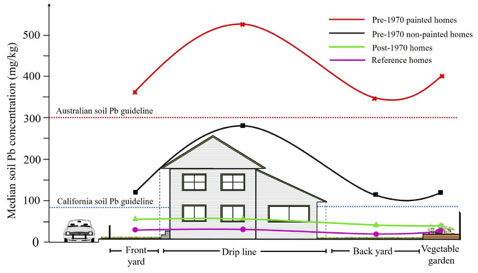NEW TECHNOLOGY & PRODUCTS, News, Science and Life
Hidden Danger: Screening Garden Soil for High Levels of Lead
Đất vườn nhà bạn liệu có an toàn?
Lead is a potent neurotoxin that affects childhood development. Lead in soil can adhere to or be absorbed into edible plants. People can also be exposed when lead contaminated soil dust enters the home and is accidentally ingested. Consequently, governments have established maximum allowable limits for lead in soil to minimize humans’ exposure. A new study, though, reveals that 40% of the sampled homes in Sydney, Australia had lead in the soil above the Australian health guideline of 300 milligrams per kilogram (mg/kg).
Urban agriculture and VegeSafe
Urban agriculture is becoming more popular across developed countries. Almost half (48%) of all households in metropolitan areas are now growing some form of edible produce.
Most lead contamination is a result of the historical use of lead in gasoline, lead-based paint (now phased out), and previous industrial emissions. Scientists and regulators are well aware of these legacy issues, but the general public is often under-informed about the potential risks.
In addition to 40% of Sydney gardens containing soil above the 300 mg/kg Australian health guideline, approximately one in seven homes also had soil lead levels greater than 1,000 mg/kg. Soil metal concentrations were typically greatest around garden drip lines.
Lead concentrations were highest in the City of Sydney and the former local government areas of Leichhardt Municipal Council and Marrickville Council, which had mean soil lead concentrations of 883 mg/kg, 960 mg/kg, and 689 mg/kg, respectively.

Homes with painted exteriors built before 1970 were more likely to have soils contaminated with lead, with the highest levels being at homes 80 years or older. This suggests that lead-rich paint, which contained up to 50% lead prior to 1970, is a likely source of the contamination. Lead in paint was reduced to less than 1000 mg/kg (0.1%) by 1997.
The community science initiative launched a program called VegeSafe in 2013 to help urban gardeners assess the contamination risks associated with their garden soils. VegeSafe offers free soil metal screening to participants.

How to test for lead
Using a handheld X-ray fluorescence (XRF) device, like our DELTA® analyzer, supported by lab analysis enables users to obtain conclusive, quantitative results on site in about one minute. The technology has enabled a forensic approach to site assessment, helping eliminate the high costs of collecting frequent samples.
Both our DELTA and Vanta™ handheld XRF come with modes and methods to test for lead and other heavy metals, such as cadmium (Cd), mercury (Hg), thallium (Tl), chromium (Cr), arsenic (As), and more, in soil, dust, water, wood, ceramics, and many other materials.
Impact on public health
Lead exposure is especially detrimental for children because their neurological and skeletal systems are still developing. Adults are also harmed by lead exposure with complications including increased blood pressure and hypertension.
Many pre-1970 Australian homes still contain paint with up to 50% lead on exterior walls, fences, eaves, doors, and window frames. The main risk of exposure arises when lead-based paint deteriorates or is removed improperly. Indeed, many home renovators unwittingly expose themselves and others due to a lack of knowledge of lead hazards.
Reducing exposure
The United States Environmental Protection Agency introduced legislation specifically targeting houses with lead paint to prevent contamination and to minimize avoidable lead exposures, but some states have been slow to comply with the EPA regulation.
Unfortunately, this regulatory gap has not been filled in Australia either. Despite the widespread historic use of lead-based paints and the high proportion of exposure related to it, there remains a concerning legacy of soil lead contamination in older suburbs.
People residing in or planning to purchase or renovate homes built before 1970 should get their soils and paint tested for lead. If parents and homeowners think they may have caused exposure, their physicians can provide a blood lead test.

